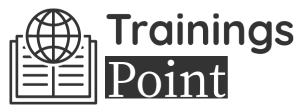Is your hiring and onboarding process costing you unnecessarily? Did you know….
Nearly 1/3 of people are job searching within six months of employment.
Almost 1/3 of externally hired executives miss expectations in the first two years.
With 10-15% annual attrition, companies lose about 60% of their entire talent base within four years.
Introducing an onboarding program into your hiring process can mean the difference between retaining top employees or watching them walk out the door after several months or even weeks. Companies who implement an effective onboarding program during the first three months of the new hire’s employment will experience a 50% greater retention; a 54% increase in productivity; and a 59% higher engagement than those who don’t according to the Aberdeen Group.
What does yours do? And do you even have an onboarding program?
A strategic onboarding plan can dramatically impact your business. Therefore, it needs to be done right especially if it’s now being done remotely. Yes, there are challenges, but there are also simple, innovative ways to help new hires quickly learn the performance expectations of their new job; align their personal goals with that of the team; and integrate into your workplace culture. If that happens, it will result in higher job satisfaction and higher engagement; better job performance; and reduced turnover. it’s a win-win for everyone.
WHY SHOULD YOU ATTEND?
You have made your decision about whom to hire. You’ve gotten them excited about their new job. You’re excited about what they can bring to your team. Now what?
Onboarding is important because it introduces the new hire to the company’s culture and expectations as well as your department’s goals and key priorities. In addition, onboarding gives the employee the vital training and information needed to succeed in their new position. The sooner your new hires start feeling part of your team or department, the sooner they will start contributing at full capacity.
An onboarding program isn’t just a routine checklist; it should be a step-by-step program that makes the new hire, as well as the manager, confident they made the right choice and confident they can succeed in their new job. It’s a way to avoid buyer’s remorse.
Also, a new hire’s compatibility or culture fit will likely be determined during the onboarding process. This can save you the manager from a prolonged investment of your time and money into the wrong person. It’s also a win-win for everyone.
LEARNING OBJECTIVES
- Recognize the difference between orientation and onboarding: They are not the same, you need both
- Identify the building blocks of an effective onboarding program: The 4’Cs: compliance, clarification, culture, connections
- Review a toolbox of five best practices, with real-world examples, for implementing an onboarding program in your organization
- Understand the responsibilities of three key stakeholders: Executive management, human resources, the new hire’s manager
- Learn how remote or hybrid onboarding can build connections and communication to get everyone on the same page
- Don’t keep them in the dark. Know the 5 key questions every new employee wants answered and how to respond to enhance their engagement
WHO WILL BENEFIT?
- CEO’s
- COO’s
- VP of Human Resources
- Chief Learning Officer
- Directors
- Project Managers
- Operation Managers and Supervisors
- Team Leaders
- Human Resources Professionals
You have made your decision about whom to hire. You’ve gotten them excited about their new job. You’re excited about what they can bring to your team. Now what?
Onboarding is important because it introduces the new hire to the company’s culture and expectations as well as your department’s goals and key priorities. In addition, onboarding gives the employee the vital training and information needed to succeed in their new position. The sooner your new hires start feeling part of your team or department, the sooner they will start contributing at full capacity.
An onboarding program isn’t just a routine checklist; it should be a step-by-step program that makes the new hire, as well as the manager, confident they made the right choice and confident they can succeed in their new job. It’s a way to avoid buyer’s remorse.
Also, a new hire’s compatibility or culture fit will likely be determined during the onboarding process. This can save you the manager from a prolonged investment of your time and money into the wrong person. It’s also a win-win for everyone.
- Recognize the difference between orientation and onboarding: They are not the same, you need both
- Identify the building blocks of an effective onboarding program: The 4’Cs: compliance, clarification, culture, connections
- Review a toolbox of five best practices, with real-world examples, for implementing an onboarding program in your organization
- Understand the responsibilities of three key stakeholders: Executive management, human resources, the new hire’s manager
- Learn how remote or hybrid onboarding can build connections and communication to get everyone on the same page
- Don’t keep them in the dark. Know the 5 key questions every new employee wants answered and how to respond to enhance their engagement
- CEO’s
- COO’s
- VP of Human Resources
- Chief Learning Officer
- Directors
- Project Managers
- Operation Managers and Supervisors
- Team Leaders
- Human Resources Professionals
Speaker Profile
 Marcia Zidle
Marcia Zidle
Marcia Zidle, the Smart Moves Coach, is a board-certified executive and career coach, business management consultant, and keynote speaker, with over 25 years of management, business consulting, and international experience in a variety of industries including health care, financial services, oil and gas, manufacturing, insurance, pharmaceuticals, hospitality, government and nonprofits. She has expertise in strategy and alignment; executive and team leadership development; social and emotional intelligence; employee engagement and innovation; career and organization change management; employee relations and talent management. Marcia has been selected as one of LinkedIn Profinder’s top coaches for the past 7 years. Check out the 200 …
Upcoming Webinars

How to Write Contracts for Procurement Professionals

How to Deal with Employees Who Love to Argue and Debate Eve…

Project Management for administrative professionals


Sunshine Act Reporting - Clarification for Clinical Research

Onboarding Best Practices for 2025: Proven Strategies to Po…

Transform Data into Insights: A Beginners Guide to Excel Pi…

Reprogramming your mind for Corporate Excellence: 4 Steps t…

Terminating Toxicity: Strategies For Leaders To Confidently…

ChatGPT and Project Management: Leveraging AI for Project M…

Uplifting the Credibility of HR: How to Build the Credibili…

How to Manage the Legal Landmine of the FMLA, ADA and Worke…

How to Write Effective Audit Observations: The Principles f…


Strategic Interviewing & Selection: Getting the Right Talen…


Onboarding Best Practices for Millennial and All Employees

Performance of Root Cause Analysis, CAPA, and Effectiveness…

Bridging Generational Divides in the Workplace


Emotional Intelligence: Mastering the Emotions of Great Lea…

FDA Audit Best Practices - Do's and Don'ts

2-Hour Virtual Seminar on How to Conduct an Internal Harass…

Accounting For Non Accountants : Debit, Credits And Financi…

Successful Strategies for FDA Expedited Pathways for Your D…

Regulation update Q1 2025: New and Proposed Regulations for…

Unlock Employee Loyalty: Stay Interviews Will Keep Them Eng…

Pay Transparency in Action: Strategies for Building Trust a…

Designing Employee Experiences to Build a Culture of Compli…


Reinvent Your Business with the Power of AI

Excel Lookup Functions: VLOOKUP, HLOOKUP, and XLOOKUP Made …

Developing and Implementing Quality Culture in the Organiza…

Tips and Techniques for Conducting an Effective Fraud Risk …

Break Free from Toxicity: Reclaim Your Power and Peace


Physician Employment Agreements: Problem Areas that can be …

Measure the Effectiveness of Compliance Programs by Engagin…

FDA Regulation of Artificial Intelligence/ Machine Learning

Quality Management Systems and Data Integrity

Implementing an Effective Human Error Reduction Program

Navigating 2025 Employment Laws: What Every Employer Needs …

Cleaning Data without Complex Functions - A Course for Data…


Succession Plan for 2025: It's Not Just for Emergencies - I…

Employers Should Prepare for Immigration Raids in 2025! Thi…

Managing Toxic Employees: Strategies For Leaders To Effecti…


Using High-Performance Coaching for Managers to Address Per…

